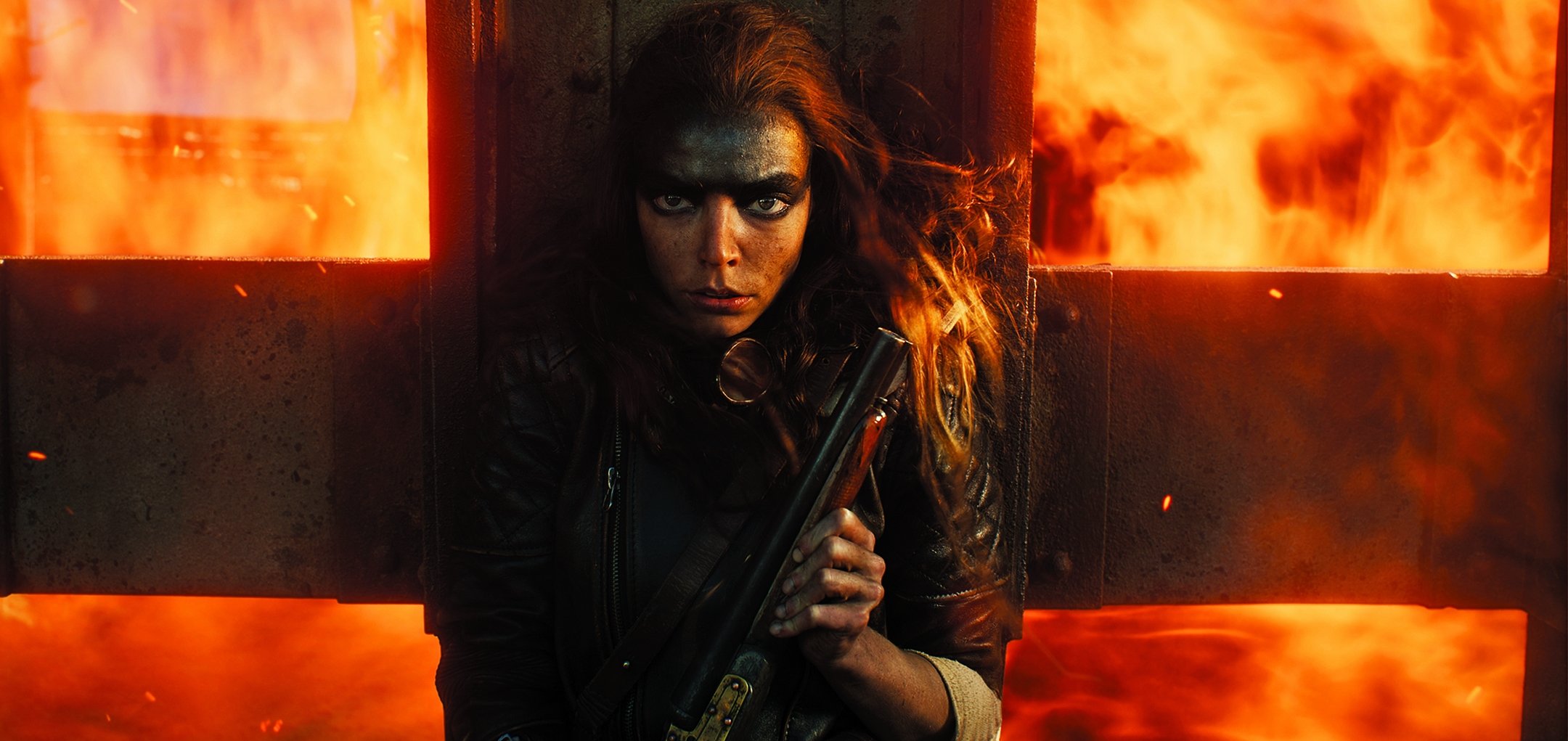
Furiosa: Raising Hell Down Under
Cinematographer Simon Duggan, ASC, ACS helps director George Miller bring the expansive action epic back to its series’ home turf.
This excerpt is from the full story that appears in the September 2024 issue of American Cinematographer magazine.
Unit photography by Jasin Boland, SMPSP, courtesy of Warner Bros. Pictures.
Before heading into preproduction on Furiosa: A Mad Max Saga, cinematographer Simon Duggan, ASC, ACS met with director George Mil-ler for a mere 30 minutes to get a feel for how they might work together. Duggan would be filling the shoes of John Seale, ASC, ACS — whose pioneering efforts on the series’ prior installment, Mad Max: Fury Road (AC June ’15), had earned Academy Award and ASC Award nominations — and he came highly recommended by Fury Road 1st AD P.J. Voeten, who had worked with all three filmmakers on a variety of Australian productions.
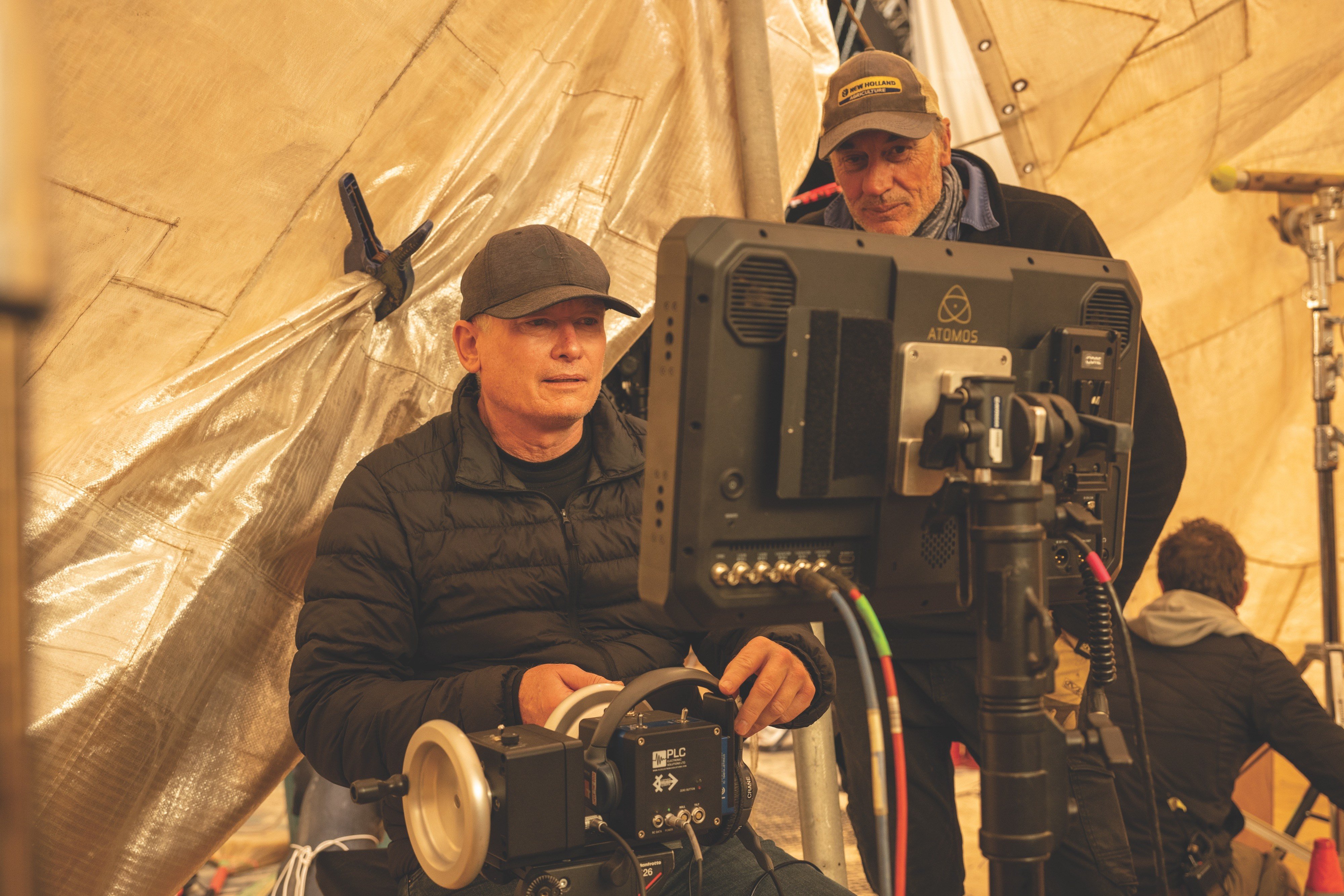
“George was definitely looking to find an Australian cinematographer,” Duggan recalls. “P.J. told him, ‘Look, it’s a no-brainer — just get Simon to come in and do it,’ and George trusted him. George knew the work I was doing and thought it was amazing, so when we first met, we just wanted to talk about the Australian industry, the people we knew and the experiences we had. And we knew that Fury Road was the starting point to the look and feel of what Furiosa was going to be — but only a starting point.”
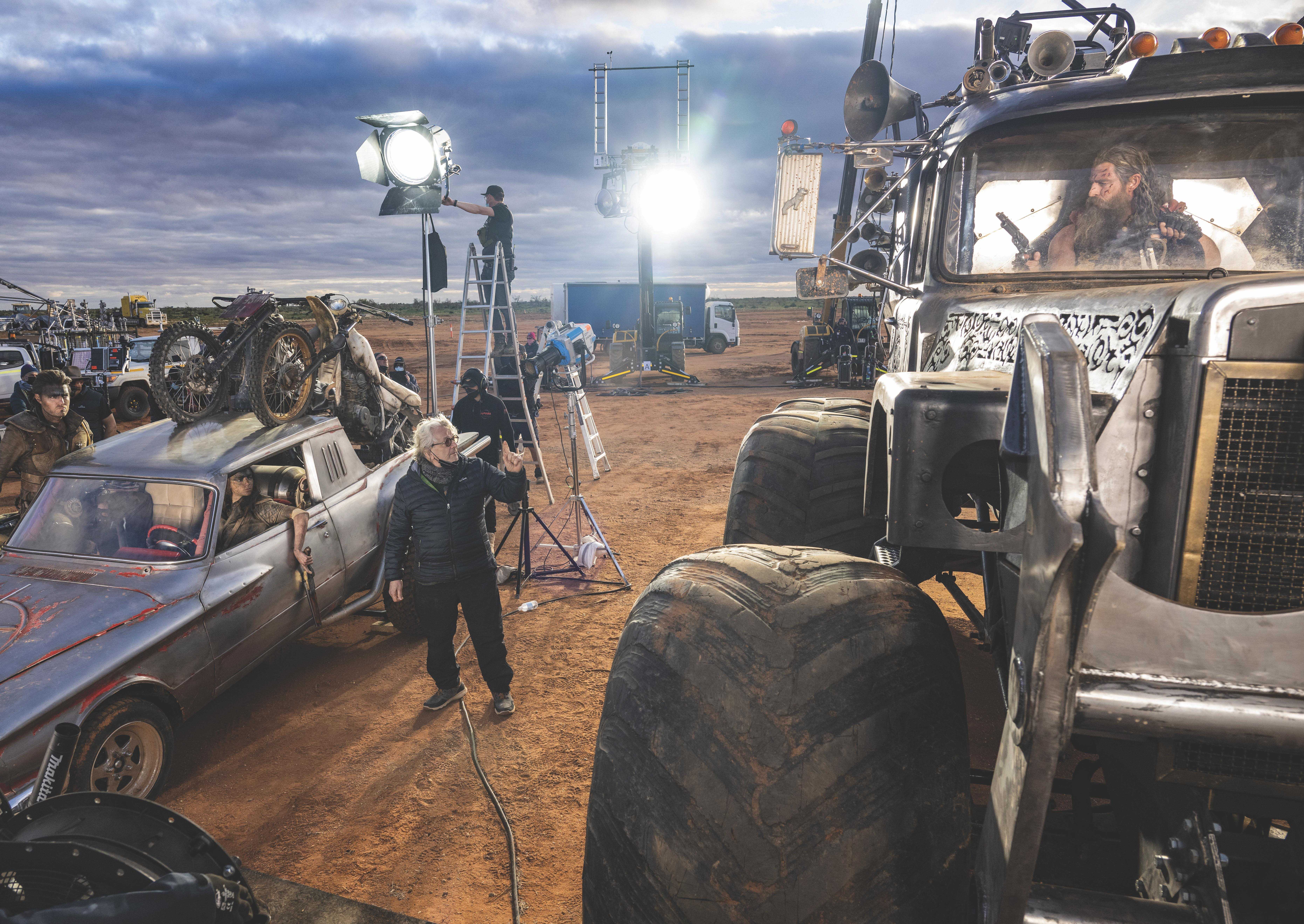
When Fury Road introduced Furiosa (played then by Charlize Theron) to the Mad Max films’ postapocalyptic universe, she became an unlikely ally to Max Rockatansky (Tom Hardy) as the two were breathlessly chased by the tyrannical warlord Immortan Joe (Hugh Keays-Byrne) and his army across a seemingly infinite desert expanse. Furiosa depicts a world every bit as perilous, but the scope of the film’s narrative — set 15 years prior to the events of Fury Road and charting more than a decade of the character’s blood-tinged maturation from adolescent (Alyla Browne) to adult (Anya Taylor-Joy) — gave the filmmakers license to render that world with a greater degree of multidimensionality. “Of course, some pivotal locations we would be revisiting were the Wasteland, with its landscape of end-less red Earth, and the Citadel fortress,” Duggan says. “But we would be going even deeper into the Citadel and seeing a lot more — the labyrinth of tunnels, the enormous mechanics’ garage, the cabinets, and the little rooms dug into the rock where its residents live, including the terrace grotto where [two of the main characters] secretly meet. And the complexity of the story allowed us to explore many more locations and create different looks for different cities: the satellite cities of Bullet Farm and Gastown, and the Green Place of Many Mothers, which offers a contrast to the barren plains. It gave us an opportunity to get away from the monotony of the desert.”
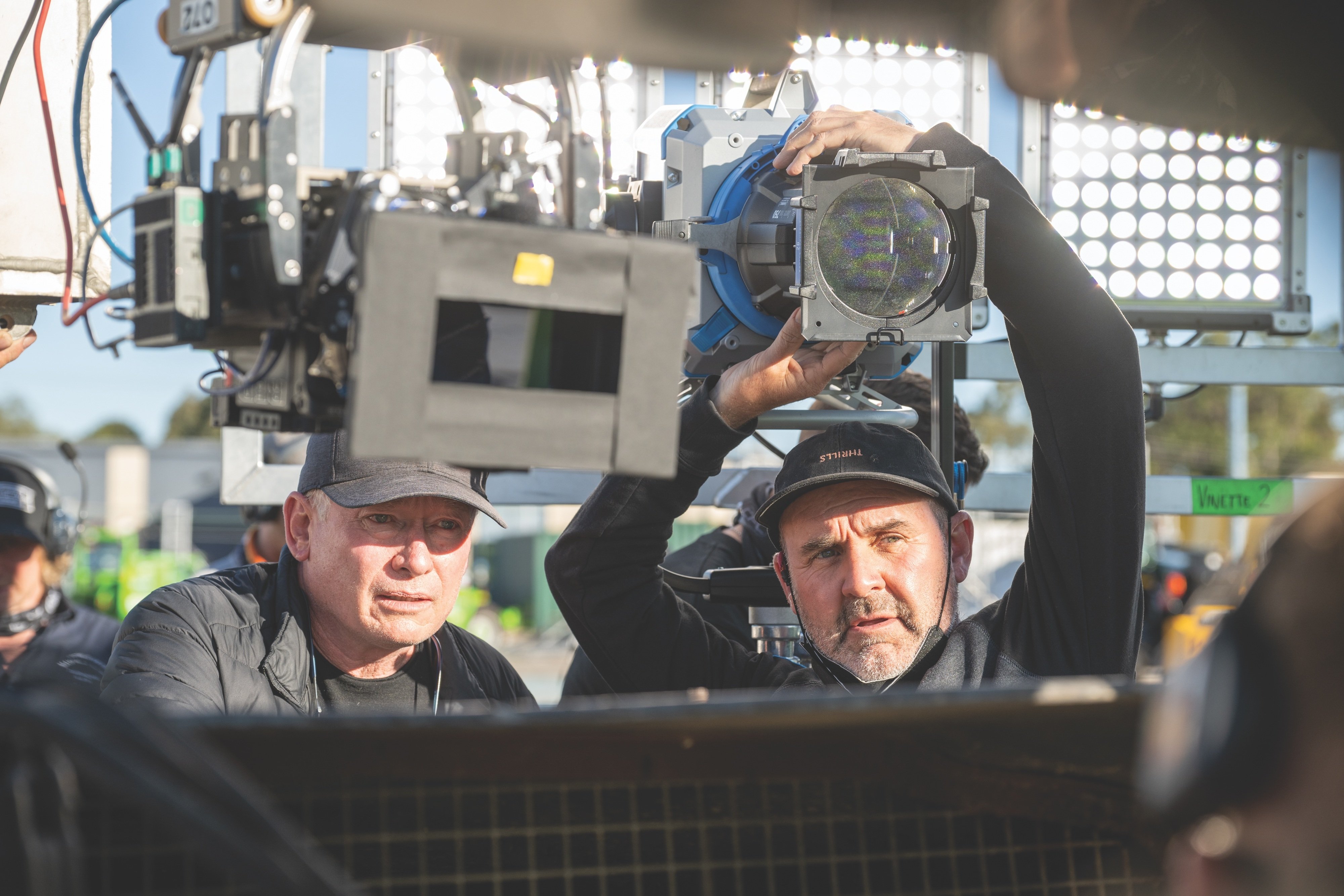
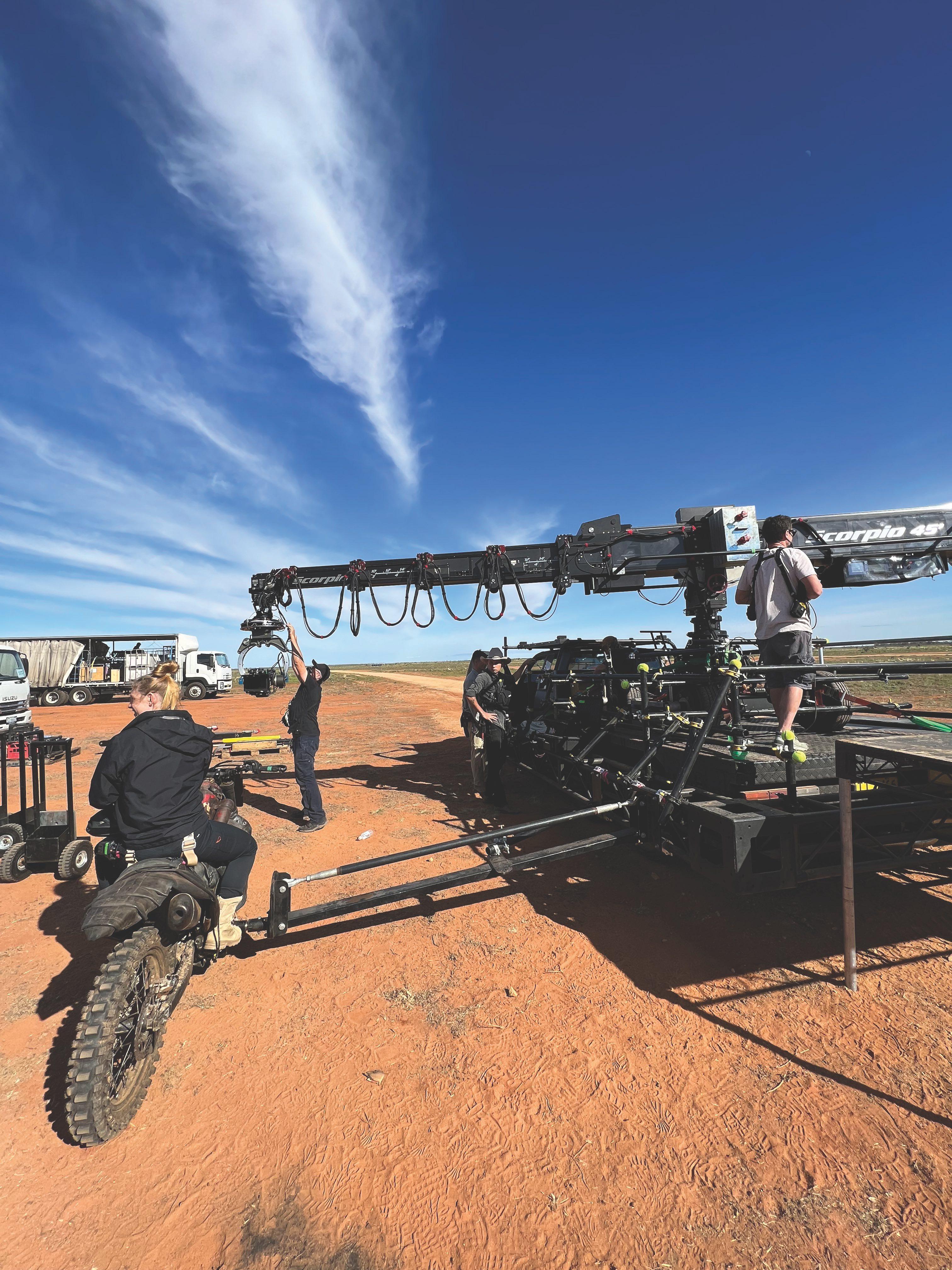
In lighting most of Furiosa’s exteriors, Duggan and gaffer Shaun Conway recognized that “nearly all of our story would be told during daytime, so everything relied on sunlight,” the cinematographer says. “And because we were in mid-El Niño, the weather during the shoot was unpredictable, with pouring rains and winds up to 50 miles per hour. So, we added a lot of artificial light to create sunlight, which helped us create a harsh look that was quite different than what you’d expect.”
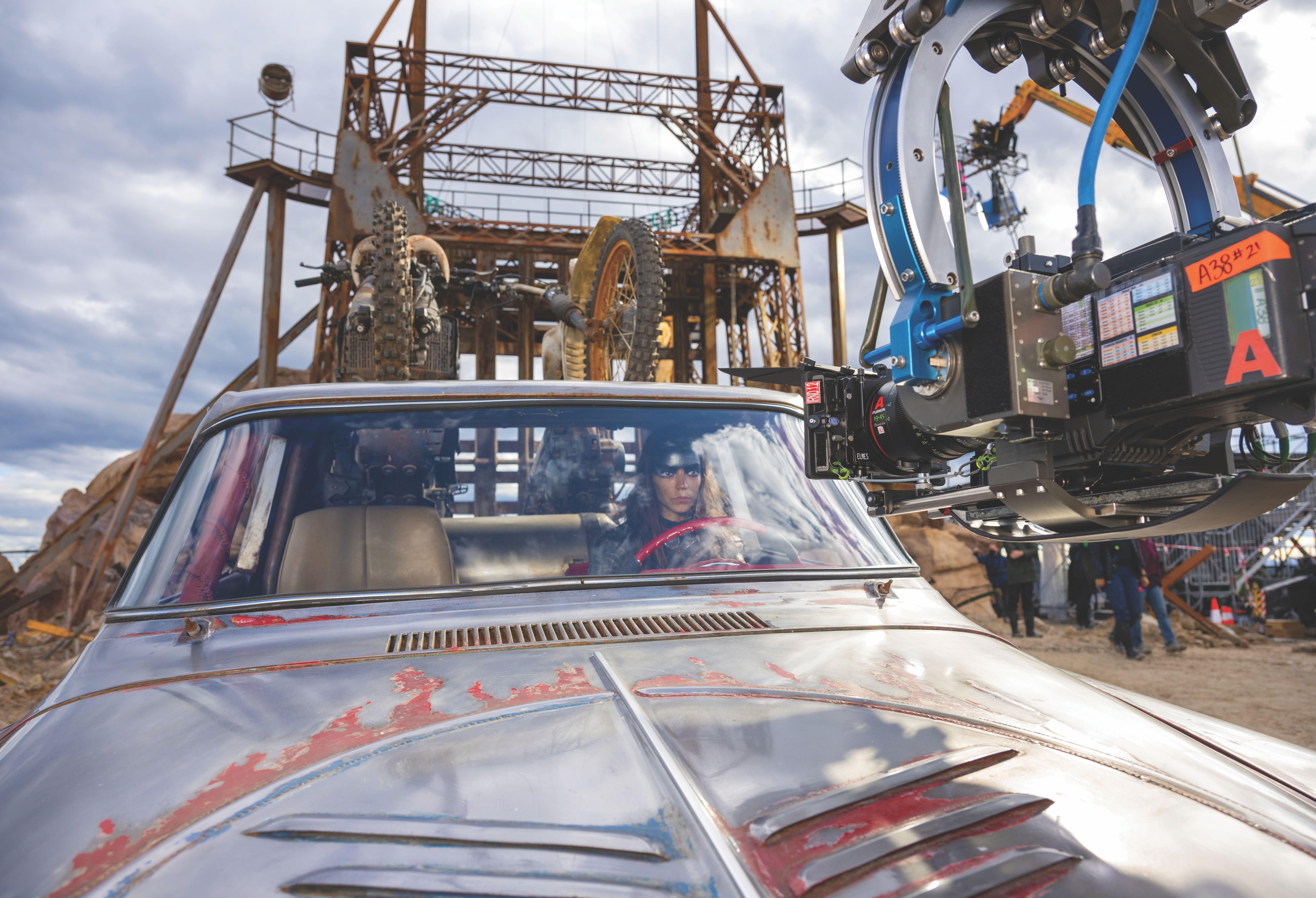
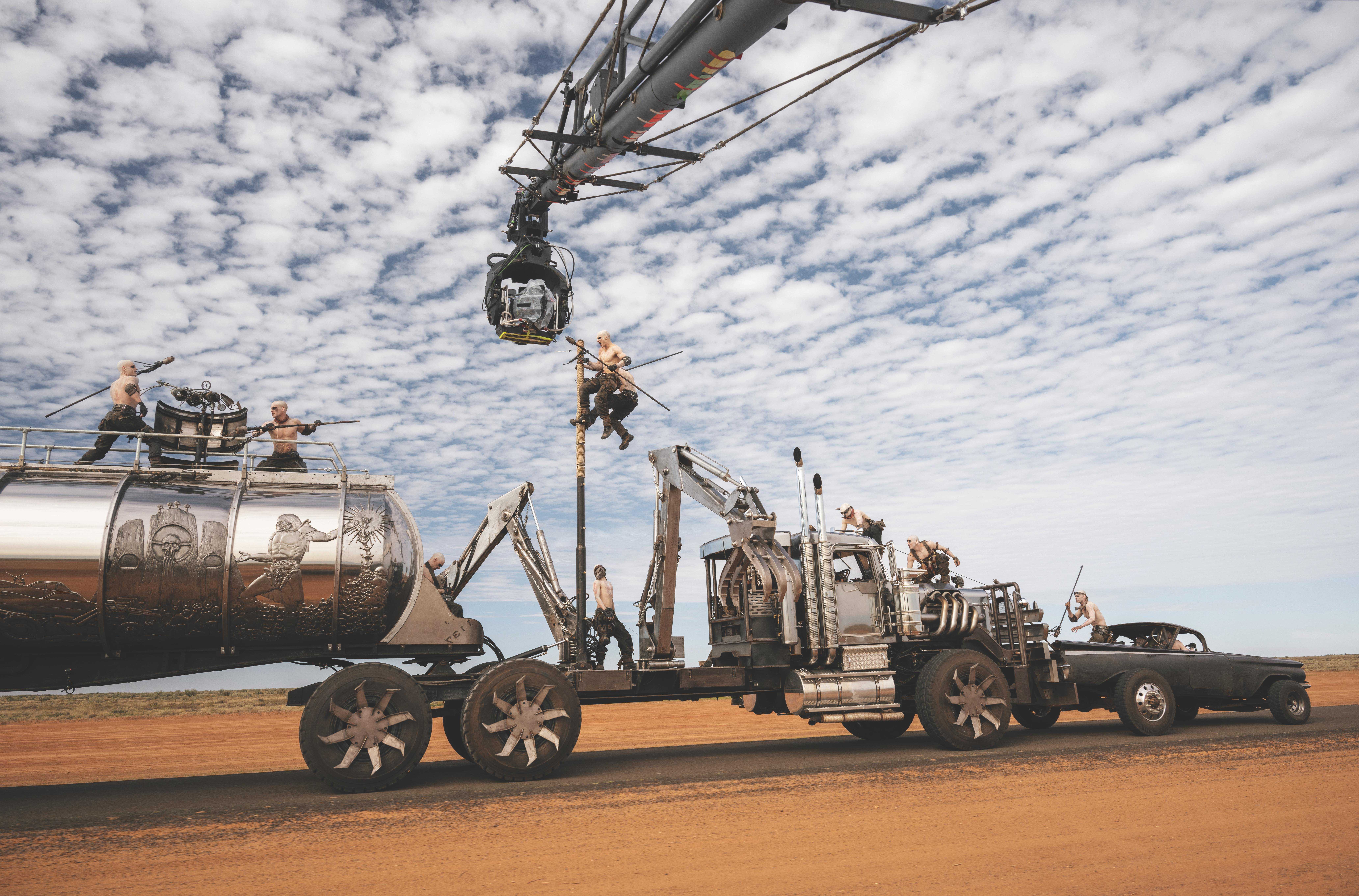
To augment their locations’ natural light, the filmmakers relied on a uniform approach, employing an array of six 18K HMI PARs at varying degrees of spot. “The six PARs were mounted to three heavy-duty telescopic handlers that were easily moveable and could with-stand the conditions, and the lamps were protected from the rain,” Duggan notes. “We found that the 18K array could cover almost half a football field, and accommodated the size of most of our exterior-location sets. We could put the light wherever we wanted to; whenever the sun was coming in and out, we’d follow and match that direction.
“George told us we weren’t going to wait for anything to light our sets, so we had to be prepared with one solution,” he continues. “And that meant we didn’t have to stop shooting — we could just keep on going. Of course, we always oriented the sets, or our camera, to make use of sidelight or backlight from the actual sun, but the brute power of those PARs gave us all the light we needed.”
You’ll find the complete story in our September 2024 issue. Subscribers can finish this story now by logging in to our digital edition. Not a subscriber yet? Do it today.







